Laser welding is a widely employed technique in modern manufacturing, particularly in industries that demand exceptional precision and accuracy in their welding processes. The aerospace and medical device manufacturing sectors, in particular, heavily rely on laser welding to join their stainless-steel components.
At CMS Laser, we specialize in the design and construction of advanced laser material processing machines for manufacturers. Our latest breakthrough is a laser welding system with artificial intelligent (AI) machine vision specifically engineered for welding stainless steel aerospace components. This machine is also well-suited for welding applications in the medical device manufacturing industry, encompassing implants, hermetically sealed containers, surgical instruments, medical equipment, and tubing.
Here are some of the key features of our laser welding system:
300-Watt Fiber Laser with X and Z-Axis
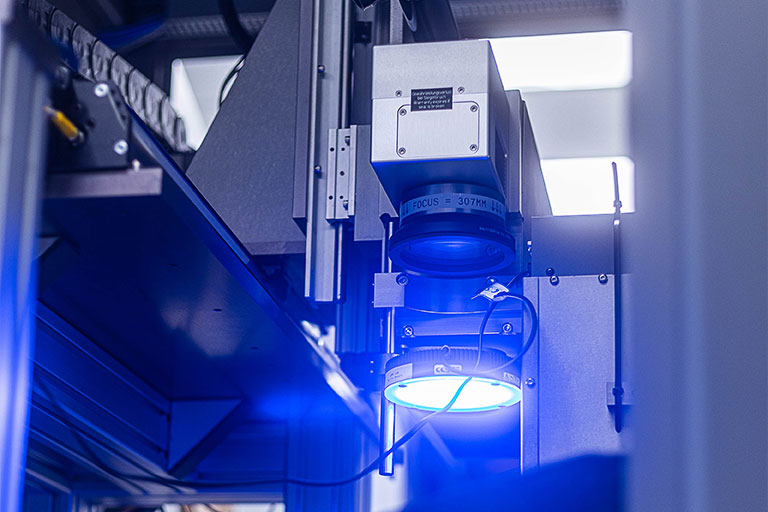
The laser source is the heart of any laser welding system. This machine is equipped with a 300-watt fiber laser that provides ample power for welding stainless steel components. The X and Z-axis control allows the operator to move the laser in any direction, giving the welder complete control over the welding process. This particular laser machine was designed for welding different types of stainless steel aerospace components together using a galvanometer scan head.
Rotary Unit with up to 90-degree Tilt on the X-Axis
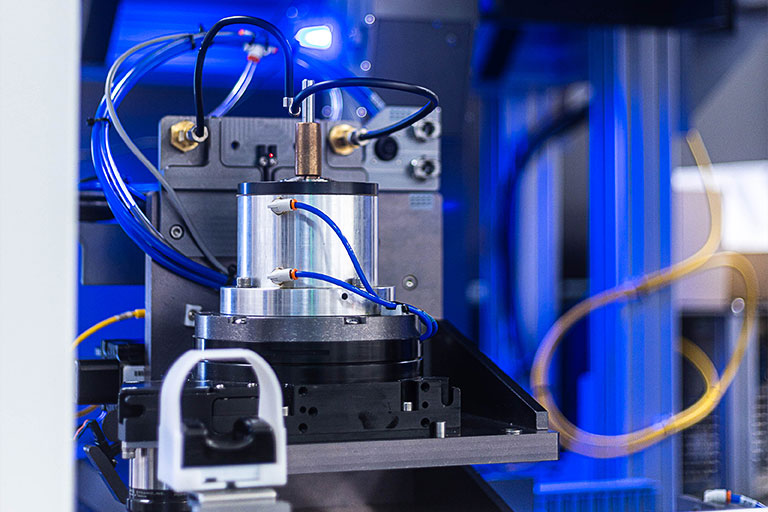
This laser welding machine is designed to provide exceptional versatility and precision. The rotary unit, which can tilt up to 90 degrees on the X-axis, allows the welder to easily access and weld even the most complex parts with ease. The chuck that holds the part in place ensures a stable welding process, making it easier to achieve high-quality welds with minimal distortion. In addition, the machine allows for laser welding on a 45-degree angle, making it ideal for seam welding and spot-welding difficult locations on miniature components. Whether you need to weld large or small parts, this machine delivers the precision and flexibility necessary to meet the demands of aerospace components and medical devices.
Through the Optics Vision (TTOV) for Finding Weld Location

One of the standout features of this laser welding machine is its Through-the-Optics Vision (TTOV) system. With TTOV, the machine is equipped with a camera that is placed in line with the laser beam, providing the operator with a top-down view of the part being welded. This enables the welder to accurately locate the weld location, ensuring precise and consistent welds every time. By using machine vision, the operator can detect any deviations from the intended weld location, reducing the likelihood of errors and minimizing the need for rework. This feature is particularly useful when welding complex or intricate parts, where precise placement of the weld is crucial to achieving a strong clean weld.
Leveraging the Power of AI for Weld Quality Detection
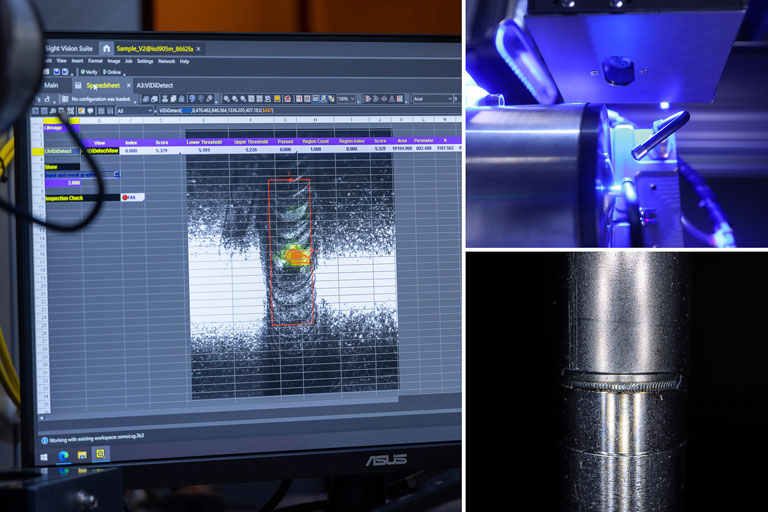
The off-axis vision feature on this laser welding system provides advanced inspection capabilities that help ensure the highest quality welds. The system utilizes Cognex’s powerful Artificial Intelligence (AI) camera and software to detect welding errors with speed and accuracy. The AI camera leverages the power of high-end Nvidia RTX graphics card AI cores to quickly identify inconsistencies and defects in the weld, ensuring that each weld meets the required standards for aerospace components. This cutting-edge AI technology was trained on a large sample of welded stainless steel components to detect even the slightest defects in the weld quality. While this system does not currently adjust laser welding parameters based on AI, it may be a possibility in the future as AI continues to evolve in the laser material processing sector.
Gas Assist Laser Welding
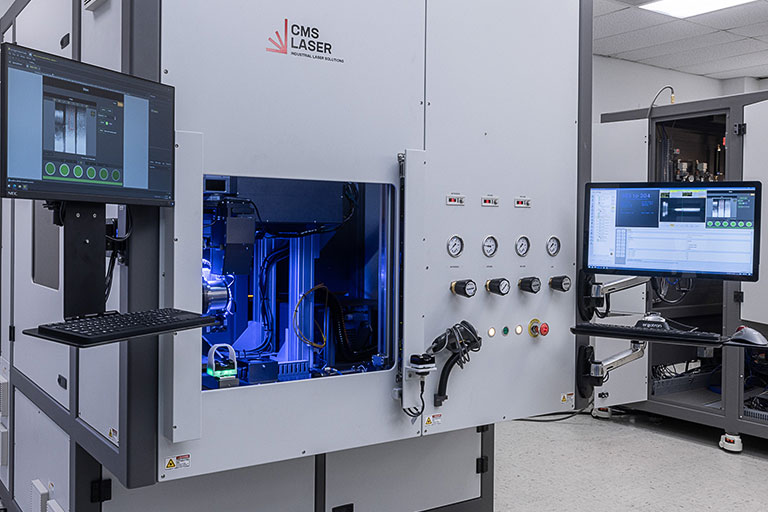
In laser welding, an inert gas such as helium, argon, or nitrogen is typically used to create a clean and stable welding environment, which helps prevent oxidation and contamination of the weld.
For example, helium is commonly used in welding aluminum and other non-ferrous metals because it has a high thermal conductivity, which helps to remove heat from the weld zone quickly. Argon is often used in welding stainless steel and other alloys because it is a very stable gas that does not react with most metals at high temperatures. Nitrogen can also be used in certain applications to improve the strength of the weld by promoting the growth of fine, uniform grains in the weld area.
In addition to selecting the appropriate gas, the flow rate and pressure of the gas can also be adjusted to optimize the welding process for a particular application. The system is equipped with controls on the front of the machine for the operator to finely tune the gases used for specific welding applications.
Barcode Reader for Program Selection and Consistency
The barcode reader is a valuable accessory for the laser welding machine, allowing the welder to quickly and accurately recall specific programs based on the part being processed. By scanning a barcode on the part’s documentation, the correct welding program is automatically pulled up based on the part number. This feature reduces the chance of operator error and increases efficiency in the welding process. Additionally, the barcode reader can be used in conjunction with a database for tracking part history and other accessories for even greater precision and consistency in the welding process.
Ergonomic Design for Research & Development Applications
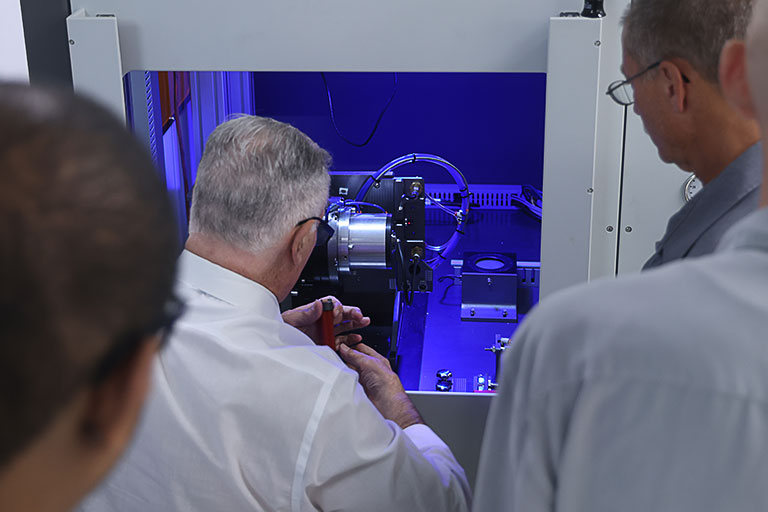
The primary use for this laser welding machine is for research and development of metal welding applications in the aerospace industry. The customer requested an ergonomic feature that would allow the operator to sit comfortably while welding various types of stainless steel together. To meet this request, our engineers extended the front of the system to accommodate the Y-axis, which moves the rotary fixture closer to the door. This modification ensures that the operator can sit in a comfortable position while still having access to the welding area, improving their efficiency and reducing the risk of discomfort or injury.
Engineered Laser Welding Solutions
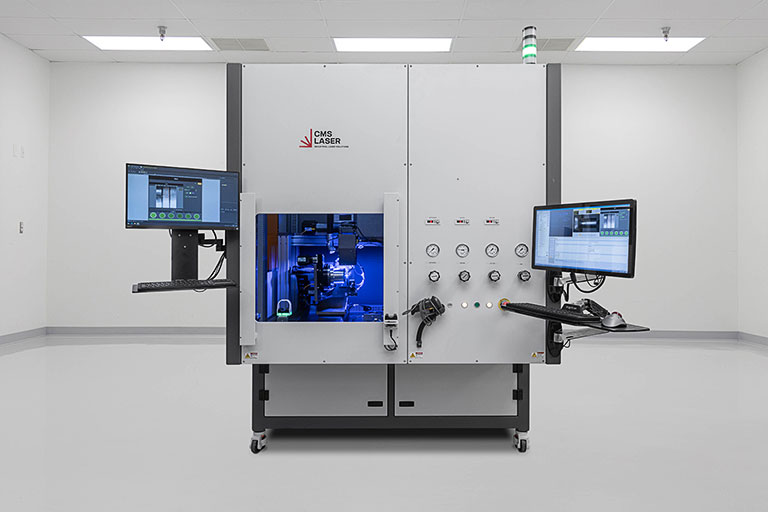
This laser welding system is a high-tech machine designed for welding stainless steel aerospace components, as well as other exotic metals and alloys. The machine is also suitable for welding in the medical device manufacturing industry. The key features of the machine, such as the 300-watt fiber laser, rotary unit with a 90-degree tilt on a Y-axis, machine vision, gas assist, and barcode reader make it an efficient and effective tool for modern manufacturing. With this laser welding system, manufacturers can produce high-quality welds with speed, accuracy, and consistency, ensuring their products meet the required standards.
Here are a few laser welding machines CMS Laser has developed over the years:
- Laser Welding Stainless Steel Aerospace Parts
- Laser Welding Plastic Transmission Pans
- Laser Welding Plastic with Rotary Table and Rotary Axis
- Laser Welding with Beam Delivery on Robot Head
If you’re in search of a laser welding system to aid your manufacturing process, whether it’s for joining various materials such as metals, plastics, or even glass, our team of expert engineers can help develop a comprehensive, start-to-finish solution tailored to your specific needs. At CMS Laser, we’re more than just a solutions provider – we’re an engineering partner committed to solving your manufacturing challenges using cutting-edge laser technology and software. Get in touch with us today to discover the vast possibilities of our laser welding solutions.
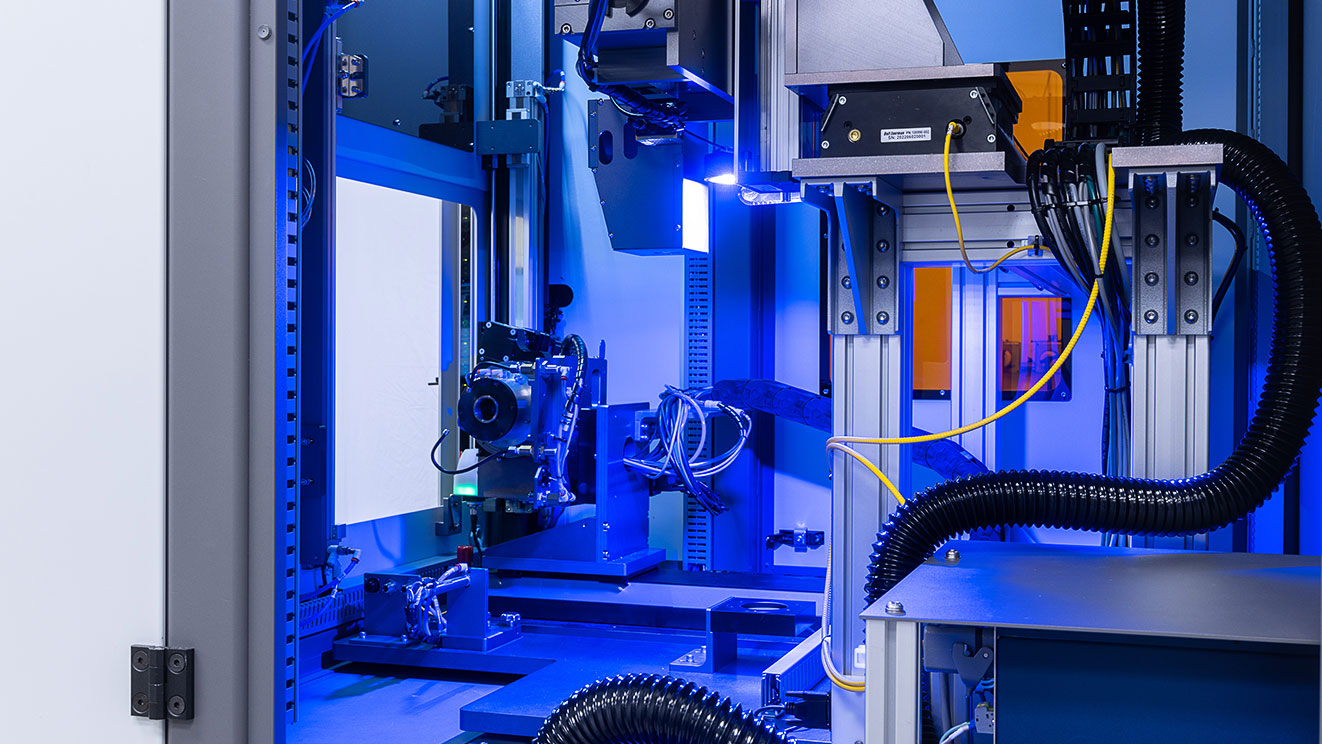
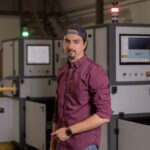




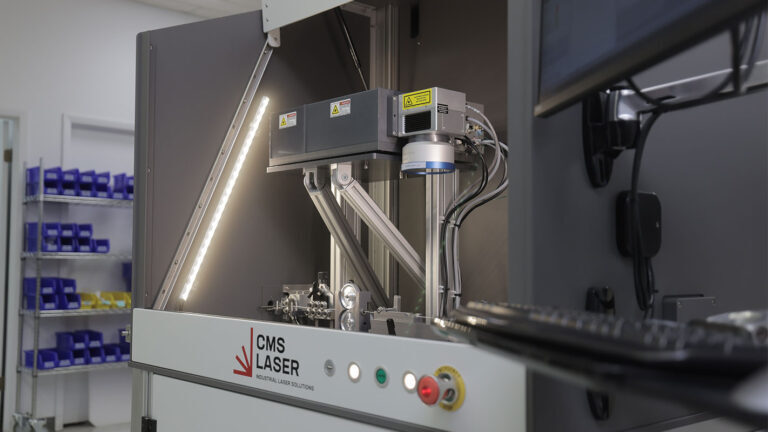

0 comments
Leave a comment.